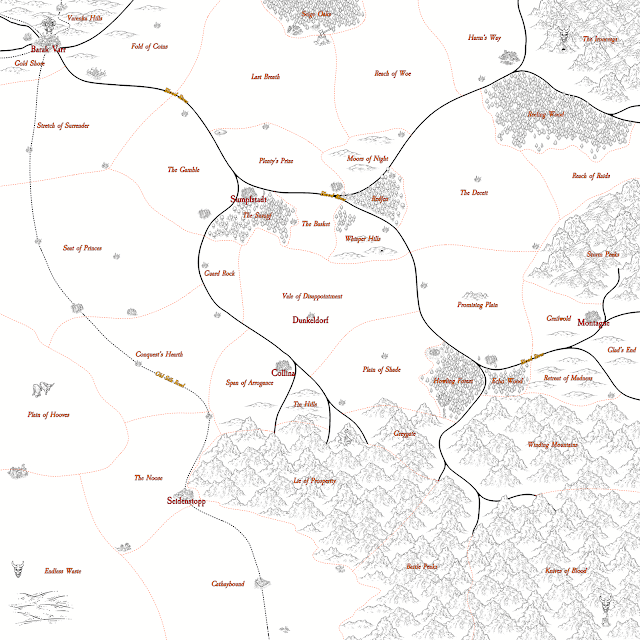I wanted neither of those things. I wanted to combine the feel of Blades in the Dark downtime with Darkest Dungeon's camp phases. I wanted a simple system that could be run through, quickly, that would also force dynamic change on play.
This is what I came up with:
Here we get the ground work. You need provisions, and you need to manage your condition. That's it in terms of resource drain for the PCs - provisions, however, are pretty expensive, so it's going to be a lot of tax if they want to mobile larger forces. This was vital. I didn't want the PCs being able to raise bands of warriors without it costing them a lot.
Here we get some of the strategic choices of the PCs. Where, how, and what are they doing during. This section mentions Weather, but that's a GM tool that I'll go into at a later date. For now (unless one of them decides to play as a Jade Magister) they have no way of affecting the Weather rules, except to get a forecast.
The first half of the Travel Actions. I wrote them in a very Apocalypse World manner so that they gave breadth without slowing down play too much. I'm imagining this to play out rather quickly in practice, with each player choosing an action (or to help an action), and then them playing out in order.
And the second half of the Travel Actions. Perhaps the most interesting part here is the Scout action, which as you can see, takes the place of an encounter check. I struggled with this, for a while, because I thought it might not make sense, but given almost always, the PCs would be attempting to evade enemies during their travel, that it worked. This also means PC Skill is more important than the randomness of the GM's dice.
And lastly we have camping. This essentially allows PCs to extend their resources, and (hopefully) recover. There are some more tactical options here, because, depending on the party, it might be safer for them to keep on the move (if they have better results with Navigate and Scout) or to try to camp as much as possible (if they have a high Perception).
The last thing to note is the tags, like Safe, Wild, Infested, etc. These are applied to Regions on the map, which are not exposed to the PCs until they go there, or gather information about a Region.
Now... That's a lot of talk about Regions. But... Huh? Here's the area map for the Valley of Blood I posted a few days back:
See those chunks formed from orange dashed lines? Each one of them is a Region, and each one has a name (like Vale of Disappointment or The Gamble). Each one also has tags on the GM's side of the screen, which tells me how many days it takes to cross, how dangerous, open, accessible it is, and also what the sources of danger and adventure there are. This allows me to run the above rules straight from the map and a list of short notes!
For the purposes of the campaign (and because some of my players read this), I can't yet expose all those notes. But, if there's interest down the line, I'd be happy to post it all here.
You can grab the full version of the above rules here:
Player Travel Sheet Download
So we've got setting, and our mechanics sorted... Next up we'll talk about some of the GM Tools being used to better run On the Edge of Exile!







No comments:
Post a Comment